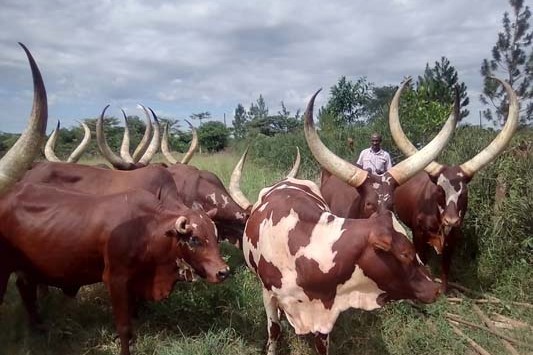BY SHERYL HAITANA
For large parts of New Zealand, ryegrass is still indisputably hard to beat, PGG Wrightson Seeds chief scientific officer Dr Alan Stewart says.
Perennial ryegrass is the major grass species used in dairy farms across most regions of NZ. It is rapid to establish, very grazing tolerant, mixes well with white clover and produces large quantities of palatable feed.
However, it is not perfect and factors such as droughts, pests and climatic extremes can limit its persistence. This is particularly apparent in northern regions.
The increase in the stocking rate in the dairy industry over the last 20-30 years and the amount of herbage consumed by animals has put added pressure on pastures and impacted persistence. It has limited seed drop and recruitment of new plants into the pasture.
‘We are fortunate that the pastoral industry recognises the value in new plant genetics and that farmers are prepared to invest to capture the advancement made through plant breeding.’
Plant breeders have continued to make gains in yield, but also focus on quality, persistence, disease resistance and pest tolerance through endophytes.
Perennial ryegrass requires endophytes in order to resist pest effects over large parts of the country as without endophyte, ryegrass can struggle to persist.
Incorporating endophytes into ryegrass adds further complexity to breeding programmes.
“We are continuing to develop new endophytes to have them capable of combating particular pests,” Alan says.
New technologies carried out by AgResearch like gene editing are likely to provide improved endophyte strains for the future.
Breeding pasture plant cultivars in NZ involves breeding many types with specific roles on farms. These include a range of perennial ryegrasses, diploids and tetraploids, with earlier or later flowering behaviour. In addition farmers require hybrid ryegrasses, Italian ryegrasses and annual ryegrasses.
Then we also have to produce the clovers and herbs for these mixtures as well as chicory, plantain and the numerous forage brassica systems that get used in NZ farming systems.
Breeding other species for drought and heat tolerance is crucial with options like tall fescue, cocksfoot and lucerne providing important roles.
It would be a lot easier if all the investment could be in one type of ryegrass, but farmers require a diversity of pastures for their farm systems around NZ, Alan says. About $40 million/year is invested in the plant breeding industry across all species. Few cultivars are developed in less than 10 years and each cultivar costs more than $1m before it reaches the market.
To improve persistence, breeders select plants and endophytes under the most stressful conditions of drought, grazing and insect pressure, across different soils around NZ with a particular focus on northern regions. Breeders evaluate performance over many years and under varying grazing conditions. Parent plants for cultivars need to be proven over four or five years before they are selected for future breeding programmes.
Genomic selection is starting to be applied by PGG Wrightson Seeds in both ryegrass and clover breeding in NZ, which could accelerate selection, but it takes time to get the systems working, to get scale and experience, Alan says.
“I’m confident that it will be used more and more as time goes by. But it’s not an instant solution. It also requires investment.”
Investment in plant breeding programmes and new technology like gene editing and genomic selection is significant, Alan says.
“We are fortunate that the pastoral industry recognises the value in new plant genetics and that farmers are prepared to invest to capture the advancement made through plant breeding.”
Where do we need to go?
Plant breeding in the future has the potential to help reduce the environmental footprint for NZ farmers, through addressing methane as well as nitrate and other issues caused by climate change, Alan says.
Unlike overseas farmers who will be able to add methane inhibitors to feed rations, NZ has unique grass-based systems and thus the solutions are more complex. The plant breeding industry has the potential to breed forages which can have a positive impact on reducing methane emissions, however, Alan says.
These advances along with advances in dairy cow breeding and onfarm management solutions have the potential to be part of an environmental solution.
“It’s very challenging for us because it’s the ruminant that produces methane, but we do know forages vary.
“We might not ever have the magic solution, but we should have an improvement that’s helpful for the environment, and we can provide part of the solution.”
The plant breeding industry has made good inroads on meeting nitrate issues through forages like Ecotain® environmental plantain, and it could also play a similar part in reducing methane.
“Research on nitrate leaching with forages is probably more advanced than methane research. But we also know that methane can be reduced by condensed tannins in clover.”
The additional task of selecting pastures for reduced methane emissions would add to the complexity for plant breeders in NZ.
“If we started breeding for reduced methane emissions then maybe we would have to accept less yield improvement in new cultivars. But if we can produce a variety that had a 10% real gain environmentally and we had to make a sacrifice of some yield gains, the industry is likely to accept it.”
To make this a reality, scientists would have to find the genetic variation in the plants.
The Forage Value Index is a tool that is available to the industry and this could measure the variation between cultivars for critical environmental traits.
“If the FVI could measure the varieties that are here today and show there is variation then the FVI would have a place in driving improvements.”
The development of genetically modified cultivars by AgResearch, of white clovers with condensed tannins, and of the high lipid perennial ryegrass, offers potential solutions for the future.
Developing cultivars with traits to assist with our environmental problems is the newest, hardest and most complex issue facing the dairy industry, the plant breeding industry and the farmer, Alan says.
“Clearly the animal and farming system as well as the pasture are crucial elements in the solution. It is an equally big problem for all of us. Everyone is making an honest effort to improve their systems or develop products to solve these crucial environmental issues.”






